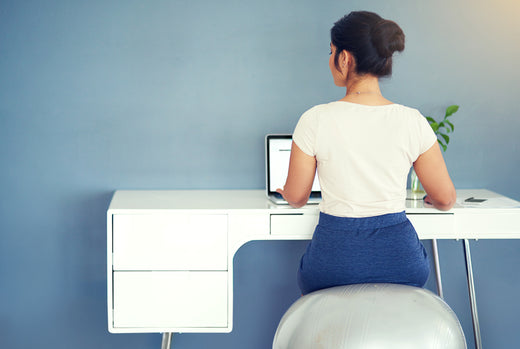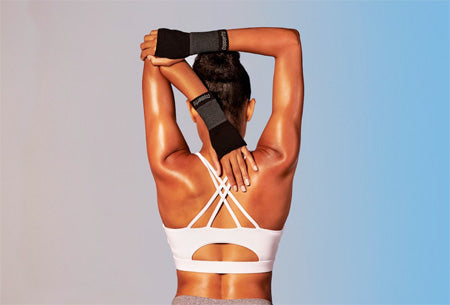
Working at home is the new normal, and there are so many reasons it’s a good thing for most of us. For others, it is literally a pain in the neck, and the wrists, and the back…
But let’s get back to the “Pros” of the at-home office:
- No commute.
- Sleeping in a little later.
- Working in your jammies (maybe business on top, jammies on the bottom for Zoom!)
- Your coffee, just the way you like it, just steps away.
- A quick workout when you have a break.
- No office drama (maybe we miss the water cooler gossip a little sometimes!)
- And so on...
(I mean, there IS a reason 83% of CEOs want employees to return in person, but only 10 percent of employees want to come back to the office full time.)
Now, how about the “Cons”:
- Distractions (the kids, the dog, the laundry, right?)
- Missing easy chats with your co-workers and team members
- A few too many breaks = motivation problems
How about this one?
- YOUR OFFICE CHAIR!
There, I said it. Chances are you didn’t think much about your office chair back in the day. And the reason was - it was SO good at its job that you didn’t have to think about it! Hours of sitting and you didn’t have back pain, kept your posture upright, and it was that all-important ergonomically correct.

The problem of good posture and working at home:
At home, most of us don’t have the space or budget to set up a proper office. You might even sit on your bed or couch with a laptop. Chances are, your office might be the dining room table. Or, you snagged a cute Target desk but are using the chair you grabbed out of the kitchen. It all looks Instagram-worthy but is the furthest thing from being ergonomically correct. Also, the cost of a good office chair is pretty high and generally doesn’t ADD to the look of any room (meaning NOT Instagram-worthy!).
What does that mean?
- Aching back
- Sore Wrists
- Tense, tight, stiff neck and shoulders.
Sound familiar?
It all stems from POOR POSTURE.
What does poor posture do to our bodies?
Not to be dramatic, but studies have shown that bad posture can reduce energy, contribute to poor circulation, digestive problems, even heartburn and incontinence! Oh, dear!
Poor posture from a poor workstation means extra stress on joints and muscles, which causes overwork and fatigue, then the aches and pains come into play. Another result of a workstation that is not ergonomically correct: musculoskeletal disorders like tendonitis or carpal tunnel.
The good news: Poor posture can be corrected, but just like all good things in life, it’s going to take some work.
It’s all about BETTER BODY POSITIONING. You got this!
Step One: Maintain awareness of how you are sitting, or just like your grandma said, “Sit Properly!”
- Your feet should rest on the floor or a footrest.
- The backrest of your chair should support your low and mid-back.
- Ankles should be in front of the knees (don’t cross your legs!)
- Keep a small gap between the front of the chair and the back of the knees.
- Keep knees at or below the level of your hips.
- Forearms should be parallel to the ground.
- Keep your shoulders relaxed.
Okay, easy enough!
But why is it so hard to maintain good posture when working?
The truth is, if you haven’t been lining your body up correctly while sitting, it takes intention and work to change your ways. Maybe it’s not that comfortable at first. And let’s face it, it’s so easy to slip into our old habits.
Your body has been trained to have bad posture over a long period and your muscles and joints need to be retrained. Think about how your body reacts to sitting at the computer: your shoulders pull forward, making your pectoral muscles in your chest tight. Weak shoulders have to fight gravity to keep posture upright. This forward shoulder position exerts extra stress on your muscles from your shoulders to your neck and pulls your head forward.
That explains SO much about the neck and shoulder pain so many of us feel!
Sometimes we are physically incapable of maintaining proper position for more than a couple of minutes because having lousy posture over a long period means changes in your muscles and joints that prevent them from straightening out.
Don’t Stress. Chances are you won’t permanently be slumped, there is hope, and we have some tips!
Improve Posture With this 1-2 PUNCH!
- Try a Posture Support
Try a posture support, or also called a posture corrector. You wear it along your upper back, helping you align to the correct posture and keep you there! Best bet: find an adjustable straightener that supports your shoulders and upper back for proper posture. Make sure it is easy to use and comfortable, with light, breathable, high-quality fabric, and targets the area you need the most support while also retaining your range of motion. It’s genius!
Dr. Amir Vokshoor, spinal neurosurgeon and chief at St. John’s Hospital in Santa Monica, California, says to keep in mind that the goal of a posture corrector should be to activate the muscles. That’s why he recommends a soft brace: It reminds the body, and our postural muscles, of the optimal place to be.
- Strengthening Exercises
Try these throughout the day:
- A simple standing forward fold.
- A yoga cat-cow - this move massages your spine, yes, please!
- A chest opener - pretty much how it sounds, but check out a visual here.
But wait, let’s not forget the wrists!
Let’s circle back to that workstation that is not ergonomically correct. When we’re not lined up correctly, our poor wrists SUFFER!
Posture is so important for your wrists too. Keep your hands and wrists in line with your forearms. Are you sitting at your desk right now? Check out your form. If you aren’t lined up, raise your chair, sit on a cushion, do what you have to do to get that placement.
You won’t regret it!
If you are suffering from wrist pain, carpal tunnel, rheumatoid arthritis, it is the absolute WORST! And makes the workday almost unbearable.
One-Two-Three PUNCH for Wrist Pain
- Take frequent breaks from repetitive motions.
- Do stretching exercises for your hand and wrist during the workday
- Try a splint or glove to offer compression as well as stabilize the wrist joint.
A compression glove can stabilize the wrist, which may ease the pain. Choose a structured wrist brace that is firm and will immobilize the wrist. Since repeated motions and extra strain on your wrist can worsen inflammation, it’s helpful to wear a brace at work or during any activities that trigger flare-ups. Keeping the wrist straight helps to alleviate some of the pressure on your median nerves. Gloves can be beneficial to ease pain and tingling while wearing them.
To learn more about wrist pain, rheumatoid arthritis, and carpal tunnel - and what helps - circle back to our blog Do Compression Gloves Help With Rheumatoid Arthritis?
Chances are you have been feeling the effects of an not-so-ergonomically-correct work station at home. Take some time to check in to see if you are set up for posture success! Use our tips to get your body aligned, and be on the way to feeling better, every day!





